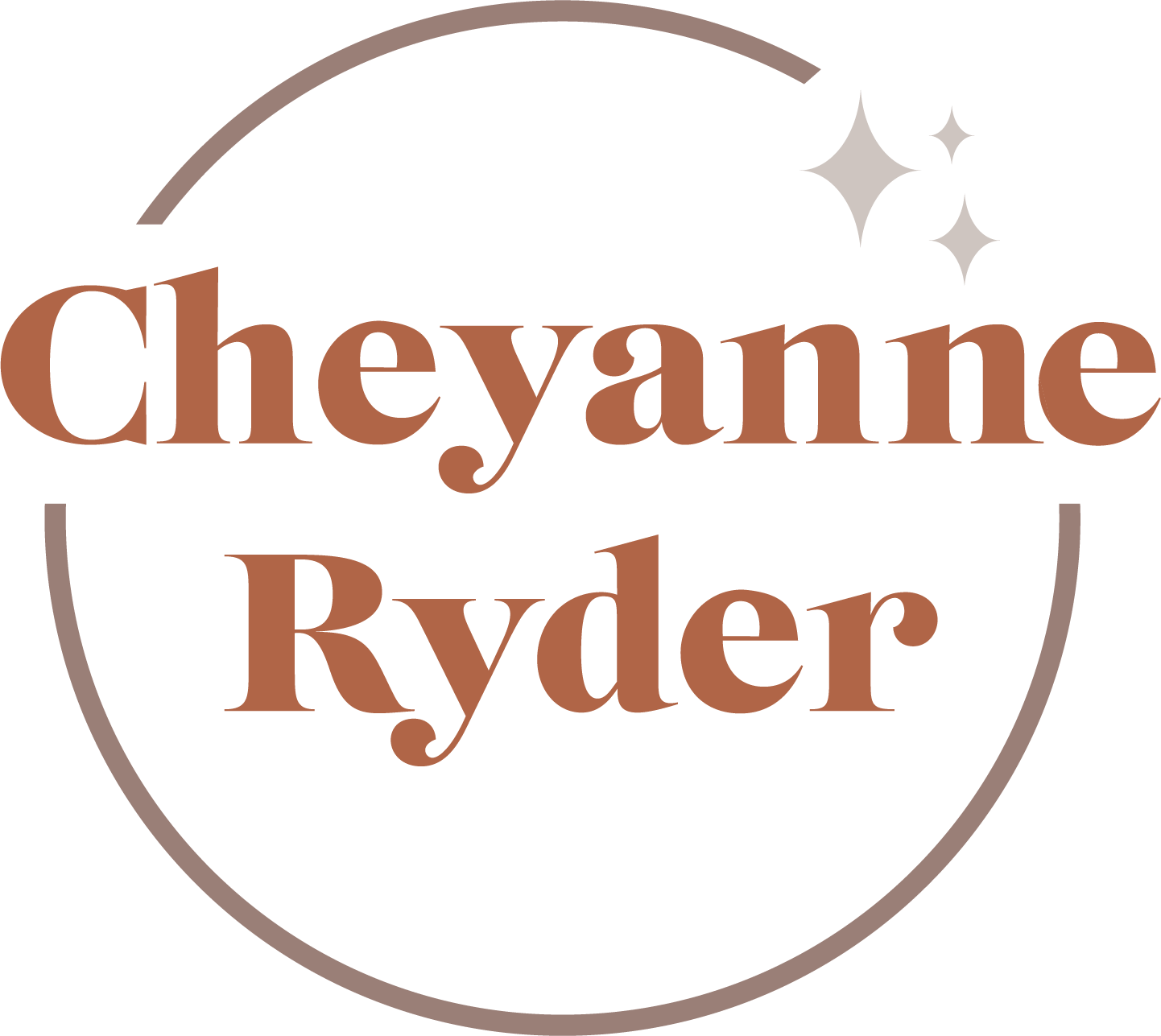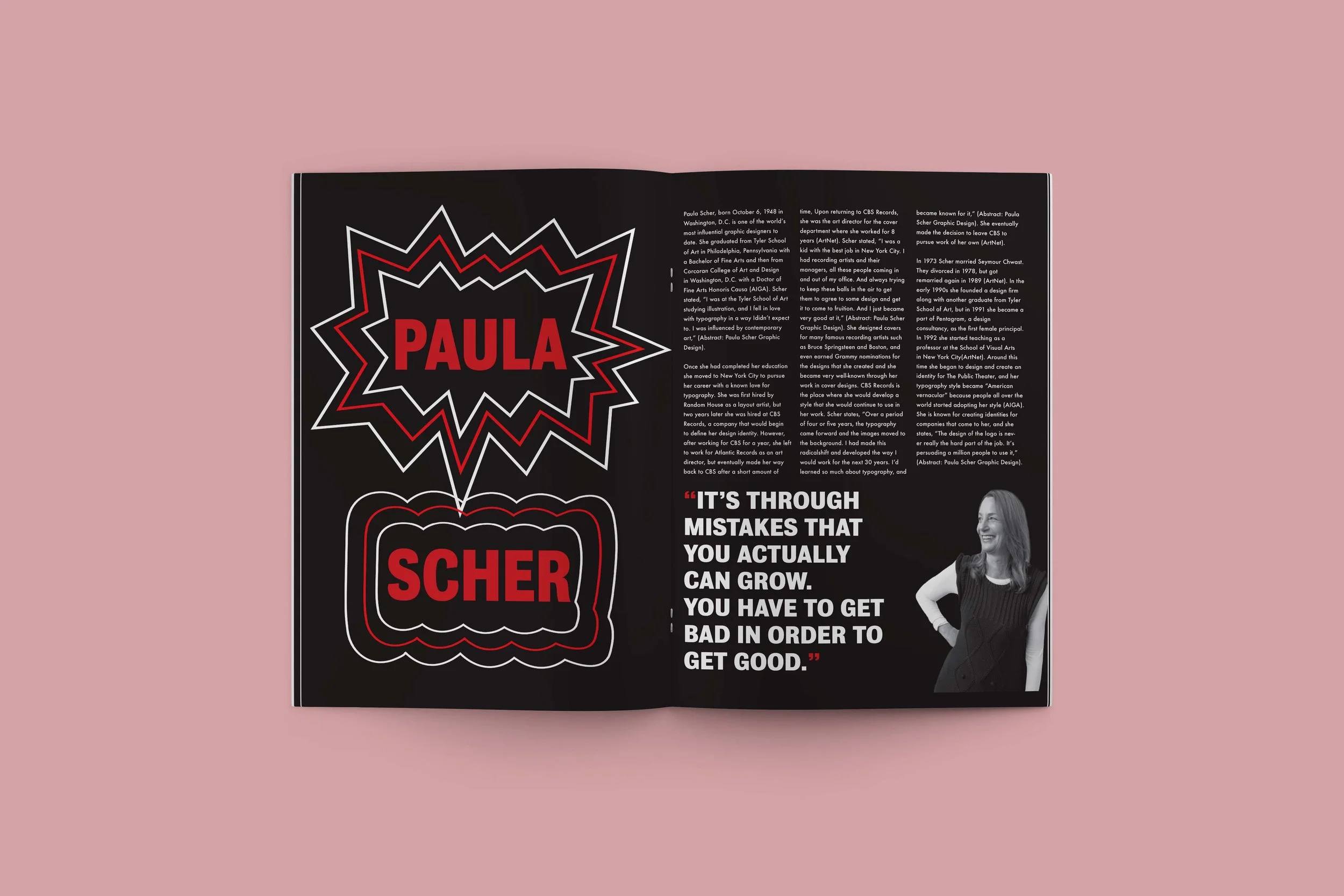Paula Scher Spotlight Print
February 2020
Proposal
For this project, I was tasked with researching the graphic designer, Paula Scher. After researching, I wrote a spotlight piece that outlined her life and experience with design.
Spotlight Piece
Paula Scher, born October 6, 1948, in Washington, D.C. is one of the world’s most influential graphic designers to date. She graduated from Tyler School of Art in Philadelphia, Pennsylvania with a Bachelor of Fine Arts and then from Corcoran College of Art and Design in Washington, D.C. with a Doctor of Fine Arts Honoris Causa (AIGA). Scher stated, “I was at the Tyler School of Art studying illustration, and I fell in love with typography in a way I didn’t expect to. I was influenced by contemporary art,” (Abstract: Paula Scher Graphic Design).
Once she had completed her education she moved to New York City to pursue her career with a known love for typography. She was first hired by Random House as a layout artist, but two years later she was hired at CBS Records, a company that would begin to define her design identity. However, after working for CBS for a year, she left to work for Atlantic Records as an art director, but eventually made her way back to CBS after a short amount of time, Upon returning to CBS Records, she was the art director for the cover department where she worked for 8 years (ArtNet). Scher stated, “I was a kid with the best job in New York City. I had recording artists and their managers, all these people coming in and out of my office. And always trying to keep these balls in the air to get them to agree to some design and get it to come to fruition. And I just became very good at it,” (Abstract: Paula Scher Graphic Design).
She designed covers for many famous recording artists such as Bruce Springsteen and Boston and even earned Grammy nominations for the designs that she created she became very well-known through her work in cover designs. CBS Records is the place where she would develop a style that she would continue to use in her work. Scher states, “Over a period of four or five years, the typography came forward and the images moved to the background. I had made this radical shift and developed the way I would work for the next 30 years. I’d learned so much about typography, and became known for it,” (Abstract: Paula Scher Graphic Design). She eventually made the decision to leave CBS to pursue work of her own (ArtNet).
In 1973 Scher married Seymour Chwast. They divorced in 1978 but got remarried again in 1989 (ArtNet). In the early 1990s, she founded a design firm along with another graduate from Tyler School of Art, but in 1991 she became a part of Pentagram, a design consultancy, as the first female principal. In 1992 she started teaching as a professor at the School of Visual Arts in New York City (ArtNet). Around this time she began to design and create an identity for The Public Theater, and her typography style became “American vernacular” because people all over the world started adopting her style (AIGA). She is known for creating identities for companies that come to her, and she states, “The design of the logo is never really the hard part of the job. It’s persuading a million people to use it,” (Abstract: Paula Scher Graphic Design).
Sketches
Just as I start most other projects, I once again broke out my sketchbook to get my ideas out of my head and onto paper. I started with three basic layouts on grid paper to ensure that in my design I stuck to the grid that I developed for the spread. After sketching for a while I turned to the Adobe Suite to begin the high-fidelity design process.
Compositions
Just as I sketched out multiple layouts, I designed two different compositions to generate a more high-fidelity flow of ideas. I developed two entirely different compositions for this spread. Each highlights a different element of Scher’s design style.
After creating each composition, I presented them to my peers to get feedback and critiques. For this project, the feedback was in favor of my first design.
Final Design
After some refinement of my composition based on feedback, I finalized my design.
I think that this design does a great job of highlighting the style of design that Paula Scher exhibits through her design. I’m pleased with the final outcome of the design. I had a great time learning more about Scher’s experiences and how she developed her style throughout her career!





